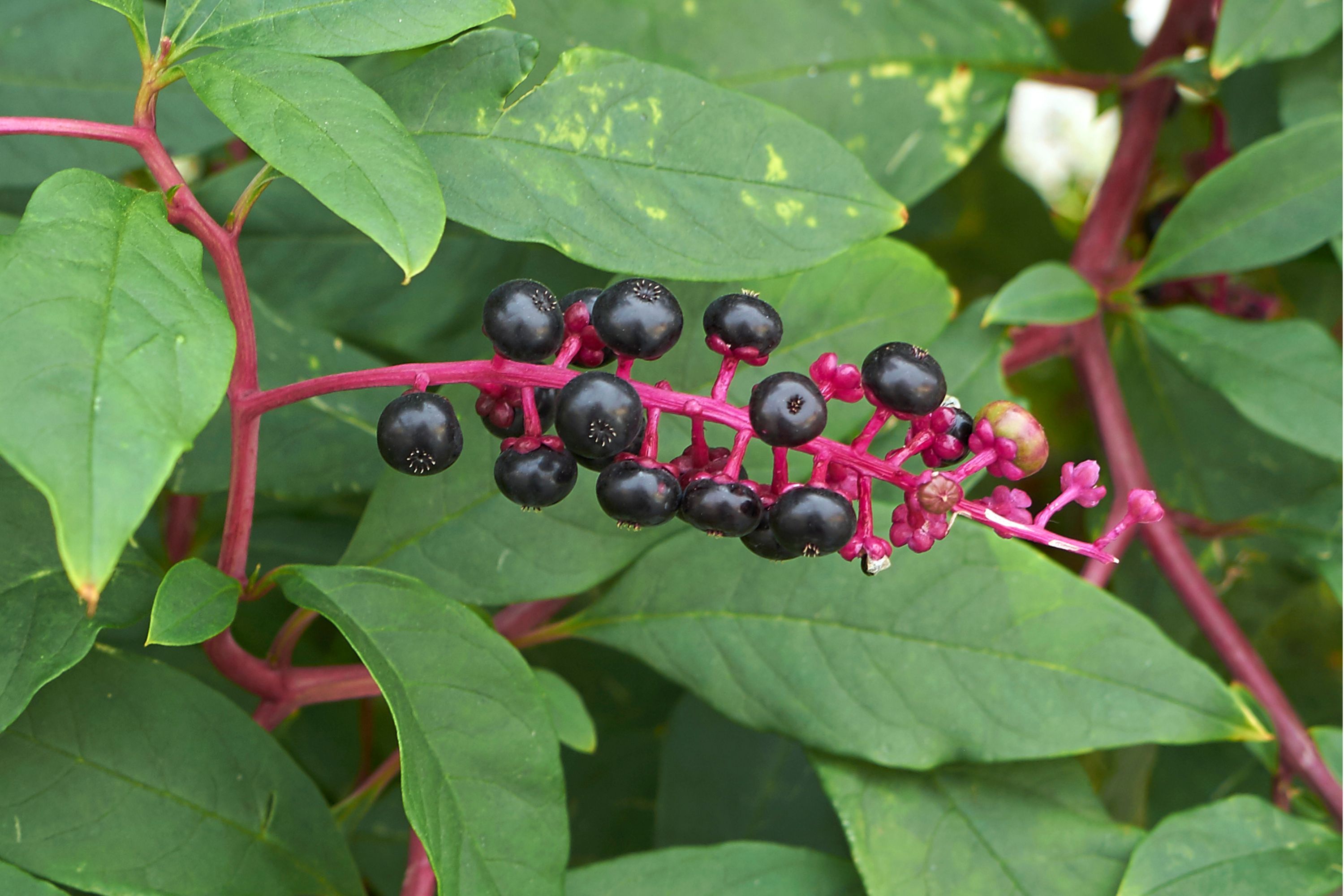American pokeweed
(Phytolacca americana)

Description
Phytolacca americana, commonly known as American pokeweed, is a native plant of North America, which is a member of the Phytolaccaceae family. It is a tall perennial herbaceous plant that can grow up to 10 feet tall. It is known for its medicinal properties and its use in traditional medicine. This plant has a long history of use in various cultures around the world, and it continues to be popular today due to its various health benefits. In this article, we will discuss the various aspects of Phytolacca americana. Description: Phytolacca americana is a large herbaceous perennial plant that grows up to 10 feet tall. The stem is erect, branching, and greenish-purple in color. The leaves are simple, alternate, and ovate in shape, with a pointed apex and a rounded base. The leaves are up to 12 inches long and 6 inches wide. The flowers are small and greenish-white, and they are produced in long clusters that can reach up to 10 inches long. The fruit is a dark purple berry that contains many seeds. Distribution: Phytolacca americana is native to North America and can be found throughout the United States, except for the western states. It can also be found in parts of Canada and Mexico. This plant prefers moist areas, such as riverbanks, wetlands, and open woods. Cultivation: Phytolacca americana is easy to grow from seeds. It prefers moist, well-drained soil and partial shade. It can be propagated by division in the fall or by root cuttings in the spring. This plant is not commonly grown in gardens, but it is sometimes used as a wildflower in naturalized areas. Medicinal Properties: Phytolacca americana has been used for centuries as a medicinal plant in various cultures around the world. The plant contains a number of compounds, including saponins, lectins, triterpenoids, and alkaloids, which are responsible for its various health benefits. The root of the plant is the most commonly used part for medicinal purposes. It has been used to treat a variety of conditions, including arthritis, rheumatism, lymphatic problems, and skin conditions. It is also used as a blood cleanser and as a treatment for sore throats, tonsillitis, and respiratory infections. The leaves of the plant have also been used medicinally. They are used to treat skin conditions, including eczema, psoriasis, and acne. They are also used as a poultice for wounds and as a treatment for hemorrhoids. Precautions: Phytolacca americana contains a number of toxic compounds, including phytolaccatoxin and phytolaccigenin. These compounds can cause nausea, vomiting, and diarrhea if ingested. The roots and berries are the most toxic parts of the plant. The plant should not be used during pregnancy or breastfeeding. Conclusion: Phytolacca americana is a plant with a long history of medicinal use in various cultures around the world. It is known for its ability to treat a variety of conditions, including arthritis, rheumatism, lymphatic problems, and skin conditions. However, it is important to use caution when using this plant, as it contains toxic compounds that can cause harm if ingested. If you are interested in using Phytolacca americana for medicinal purposes, it is recommended that you consult with a qualified healthcare practitioner first.
Taxonomic tree:







